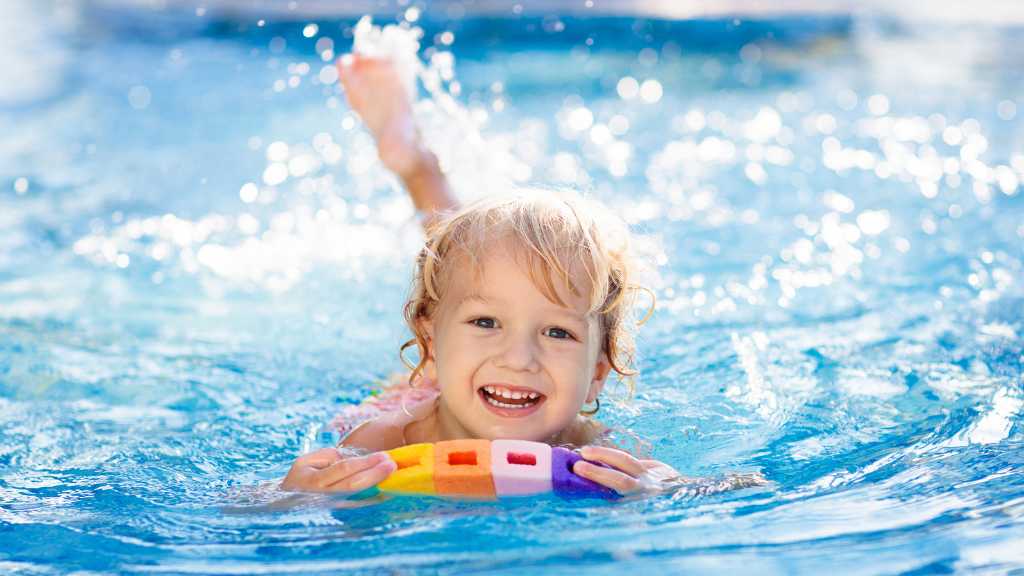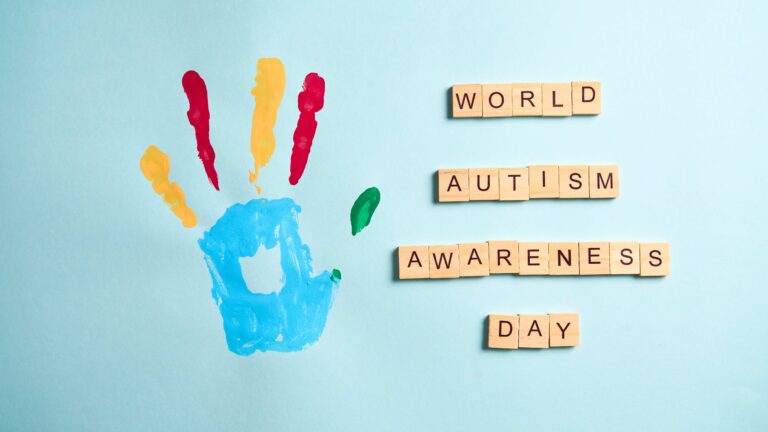Table of Contents
Should children with autism learn how to swim?
Autism and water safety is a crucial topic for many parents and caregivers of children with Autism Spectrum Disorder (ASD). The risk of drowning is significantly higher for children with autism, making this concern even more urgent.
Every child on the autism spectrum uniquely experiences the world. Some may be drawn to water, finding it a source of joy and fascination, while others might feel a deep-seated fear of it. However, select characteristics associated with autism can heighten the risk of danger, especially if the child hasn’t learned how to swim.
Should children with autism learn to swim? Absolutely! Swimming offers physical benefits, helps in emotional regulation, enhances social interaction skills, and, most importantly, provides a potentially life-saving skill in case of an accidental encounter with water.
In this blog from ABA Centers of Rhode Island, we will explore the traits of autism that can increase the risk of drowning. We will also share four practical strategies for parents and caregivers to help ensure children’s safety around various bodies of water.
Autism and Water-Related Risks
An individual with autism can exhibit behaviors and symptoms that can vary significantly in severity from one individual to another. Some children require constant support, while others may show more independence. However, the inherent challenges of autism can place them at risk, especially concerning autism and water safety.

- Communication Challenges: Many children with ASD experience difficulties with both verbal and nonverbal communication. These challenges can make it harder for them to express their needs, understand instructions, and ask for help. In the context of autism and water safety, these communication barriers can pose a significant risk.
- Understanding Danger Signs: When we think of danger signs, we typically imagine a red or yellow warning label. However, grasping these abstract concepts can be difficult for children with autism. Comprehending the reasons behind a danger sign can be complicated, which can increase their vulnerability in aquatic environments.
- Sensory Needs: Some children with autism have sensory needs that draw them intensely to water, leading to potentially risky behaviors. For instance, the shimmer and sound of water can spark great curiosity, heightening the risk of accidents if they are unsupervised.
- Elopement Behaviors: Research by the National Library of Medicine indicates that 49% of families report their child with ASD has attempted to run away at least once after the age of four. Among these incidents, 24% involved a risk of drowning, and 65% posed a risk of traffic-related injury. Elopement behaviors occur when a child wanders away from a safe environment without adult supervision or knowledge.
- Higher Levels of Anxiety: Studies by the Autism Research Institute show that 40% of children with autism experience anxiety, which sensory overloads and disruption in routines can trigger. Anxiety and stress can lead to behaviors that place them in dangerous situations.

Understanding these various risks associated with autism and water safety is essential in creating strategies to ensure the well-being of children with ASD in aquatic environments.
Water accidents involving children with autism are unfortunately more common than we would like to believe. In recent years, the number of drowning incidents among children with ASD has risen. A heartbreaking example is the tragic story reported by NBC Boston about a four-year-old girl who drowned in a neighbor’s pool. Such devastating incidents highlight the urgent need to address autism and water safety, aiming to prevent future tragedies and ensure the safety of children with ASD.
Water Safety Strategies for Children with Autism
Addressing autism and water safety is a crucial concern that anybody should overlook. Many parents and caregivers might feel uncertain about how to tackle this challenge, but at ABA Centers of Rhode Island, we are committed to guiding you toward practical strategies that can make a life-saving difference.
- Learning to Swim is Crucial: Enrolling your child in specialized swimming lessons tailored for children with autism could be one of the most effective steps in ensuring their safety around water. Swimming lessons for kids with ASD can help them acquire skills that can prevent aquatic accidents and enhance communication, social interaction, and motor and emotional development.
- Enhance Communication: It’s vital to discuss autism and water safety effectively with your child. Create a comfortable space at home where your child feels free to express their feelings and interests, particularly concerning water. Visual aids such as flashcards, videos, and role-playing activities can be instrumental in teaching the dangers of approaching water without adult supervision. Programs like the Red Cross water safety program can also serve as excellent resources for instilling safe behaviors.
- Implement Physical Barriers: Installing physical barriers around pools is vital for adding an extra layer of security between your child and potential dangers. If you have a pool at home or nearby, consider these barriers essential. Additionally, installing alarms on doors or windows leading to the pool and using durable, motorized pool covers can significantly reduce risk. High-quality, self-closing locks on barrier gates offer added security.
- Address Elopement Behavior: Whether or not your child has shown tendencies to wander, it’s crucial to address this behavior early. The risk of drowning increases significantly if a child with autism runs away unsupervised. ABA therapy can be a valuable resource in addressing these behaviors by teaching healthy coping mechanisms and reinforcing safe practices. Furthermore, ABA therapy can improve communication skills, enabling children to express their needs and interests better, thus facilitating more effective parental support.
ABA Therapy and Safety Skills
Autism and water safety demand a comprehensive strategy that integrates therapies like swimming lessons and Applied Behavioral Analysis (ABA) with robust caregiver support and understanding.
ABA therapy is a structured, specialized approach that helps individuals on the autism spectrum learn essential skills regardless of age, gender, or symptom severity. This method emphasizes understanding individual behaviors and developing practical strategies to address them, promoting positive behavior changes.
Through ABA therapy, children, adolescents, and adults learn complex safety skills by breaking them down into simple, manageable steps. These skills include recognizing danger signs, respecting safety barriers, seeking help, interacting appropriately with police, firefighters, and other safety professionals, following instructions, avoiding elopement behaviors, managing impulsivity, and effectively communicating their needs and desires.
By focusing on these critical areas, ABA therapy plays a vital role in enhancing autism and water safety, ensuring individuals on the spectrum can engage safely and confidently in their environments.
Explore the Advantages of ABA Therapy at ABA Centers of Rhode Island
At ABA Centers of Rhode Island, we profoundly understand the challenges and needs of the neurodiverse community. With the unwavering support of our dedicated team of therapists, families in Rhode Island can effectively navigate the complexities of autism and water safety. In addition to offering the remarkable benefits of ABA therapy, we also provide support for swimming lessons tailored for children with autism. Our therapists are committed to ensuring that your child’s experience in the water is both safe and enjoyable.
To embark on your journey with ABA therapy, call us at (855) 922-4184 or fill out our online form. Together, let’s advocate for the safety of individuals with autism and make a meaningful impact!








